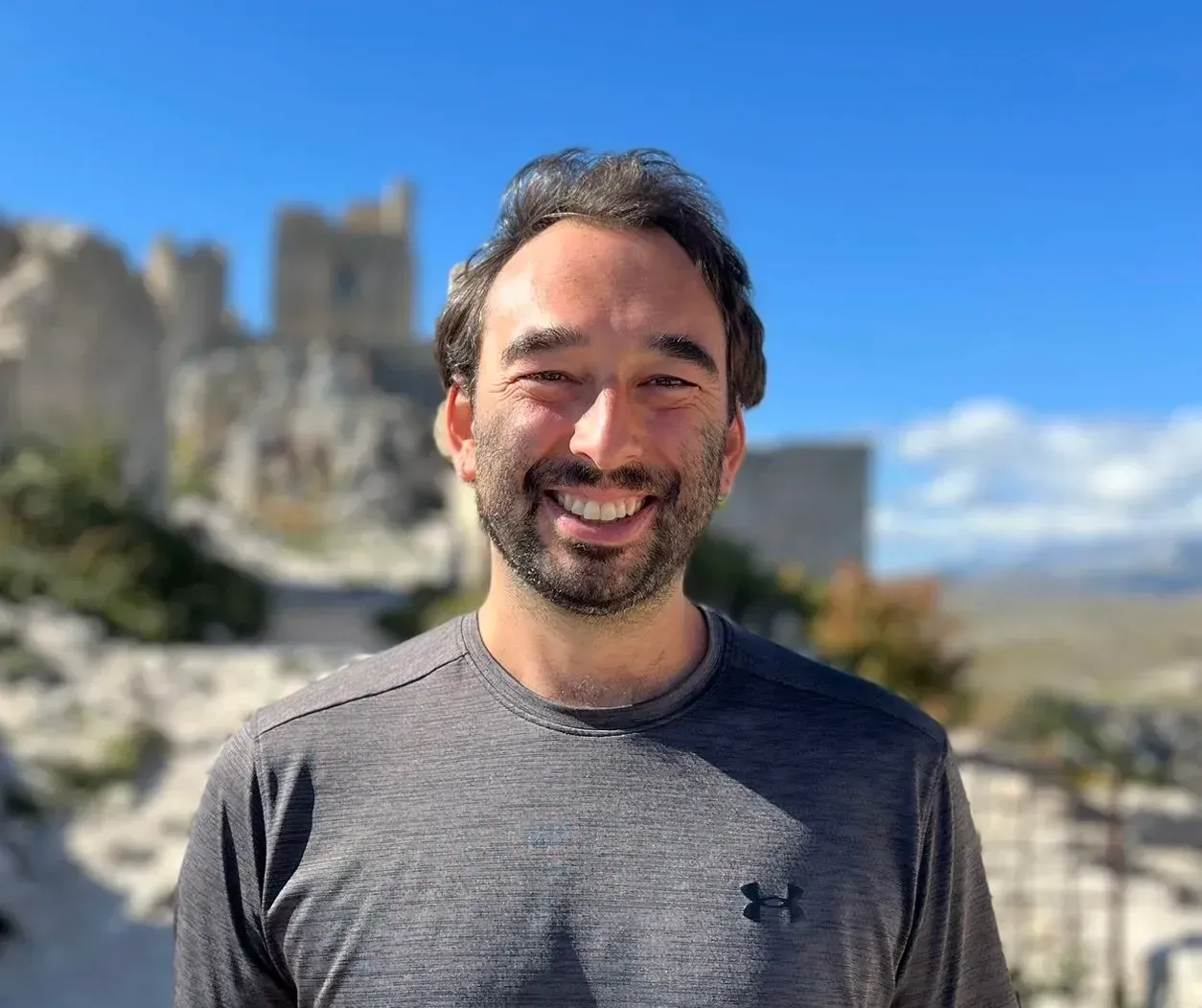
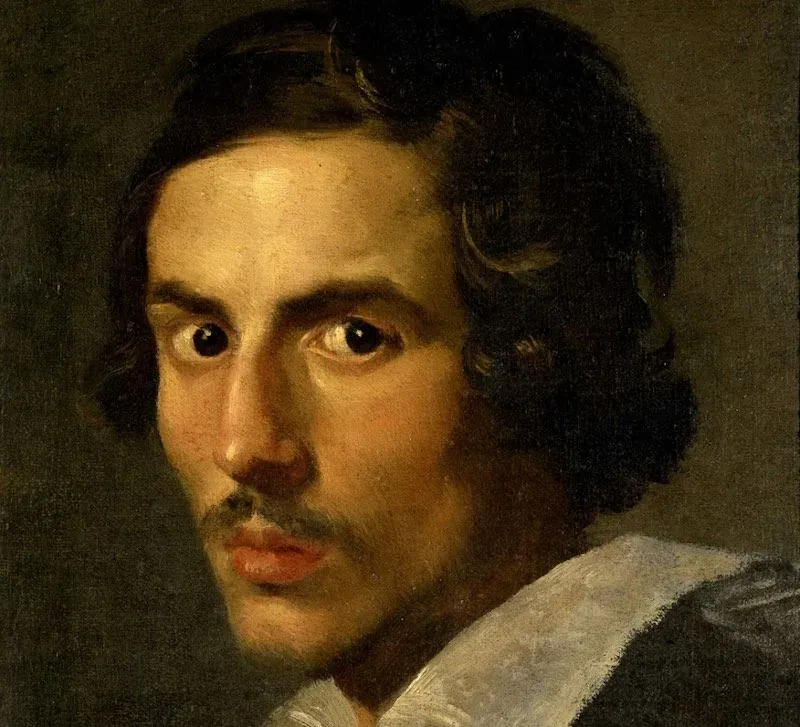

Picture the scene. The year is 1667. Music is playing in the distant background. Perhaps the evocative sweet strings of Vivaldi. Perhaps the rousing chords of J S Bach. Okay, the former was only two years old and the latter had yet to be born. But let's not let facts get in the way of a good build-up.
Baroque music... Let's just conjure up the image.
A distinguished-looking septuagenarian strolls into St. Peter’s Square with a faint smile on his face, his cloak flowing in the breeze. His curling locks and slim moustache now show a hint of grey, though his eyes are still as keen and bright as ever as he surveys the final monumental addition to the largest and most revered Catholic church in the world.
This man may have acted as though he owned the place but of course, he didn't. St Peter's Square had long been in the preserve of the Popes. But he had envisaged, designed, and created it. He was Gian Lorenzo Bernini and he must have known that this architectural masterpiece, St. Peter’s Square, would ensure his place in history. He was genuinely the master of all he surveyed.
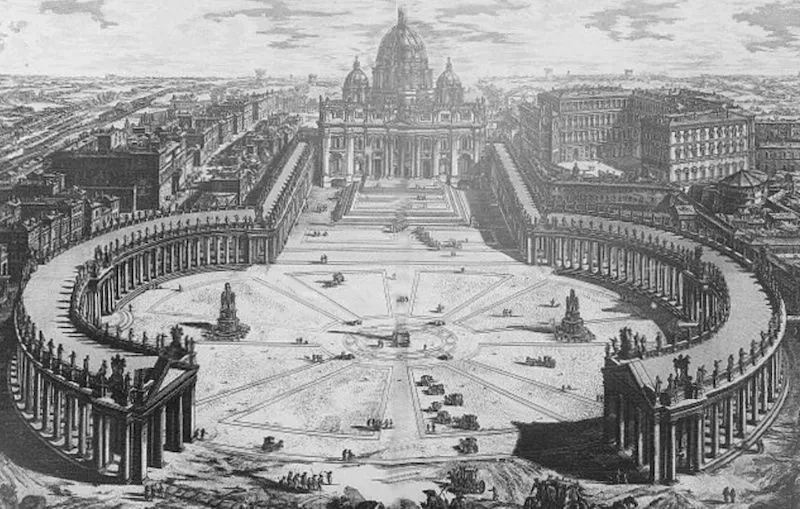
Etching of the Vatican around the time of Bernini’s intervention
Wait a minute. Let’s rewind. Who was Gian Lorenzo Bernini? How did this child prodigy become so influential in Rome for around 50 years in the 1600s? What was so different about his style that it would change the course of art history? The story of the rise of Bernini is inextricably linked to the lives of his patrons - the Popes.
In 1605 Pope Paul V Borghese was elected and made it his mission to transform Rome. For this, he needed a huge workforce of artists, sculptors, and engineers. In 1606 the Pope summoned one Pietro Bernini to the papal court. A mannerist sculptor of some renown, Pietro had moved from Florence to Naples and produced 13 children! The entire family arrived in Rome and Pietro took part in the construction and decoration of the Paolina chapel in the Papal Basilica of Santa Maria Maggiore.
Gian Lorenzo was the sixth child but showed such promise that his father encouraged him in all aspects of the work. He was immersed in the life of the bustling workshops of the papal court. Learning the tools of the trade - the hammer and chisel, the file, the rasp, and all the tricks of the trade.
The lives of the saints and classical mythology were the preferred subjects for decorative art - a nod to the glorious past of ancient Rome and the confirmation of Christianity’s conquest over paganism. These lessons would serve Gian Lorenzo well, but he had a different vision.

Self-portrait of Gian Lorenzo Bernini
From 1618, when only 20 years old, Bernini created perhaps the four most iconic sculptures of his long and illustrious career. One of his most loyal patrons was Cardinal Scipione, the nephew of Pope Paul V. Immensely wealthy and extravagantly flamboyant, Scipione took pleasure in encouraging great talent, not only Bernini but also Caravaggio.
A discerning collector, he built Galleria Borghese to be the ‘delight of Rome’ and filled it with the best works from both the ancient world and his newly commissioned works. Visit the Borghese Gallery today, and you can still see them there.
The representation of the escape from the siege of Troy, the perfect triad of the three ages of man as the strong hero Aeneas carries his aging father Anchises with his young son Ascananius at his feet.
The mythological story of Pluto, the God of the underworld carrying off the daughter of Ceres.
The mighty God lusting after a chaste nymph who begs her father for help in the chase, metamorphizing into a laurel tree.
Learn all about this world-famous statue
Deriving from the biblical story, David is depicted in the exact moment before he hurls the stone at Goliath.
Each one graphically presents a story. Somehow the solid marble becomes flesh. Somehow the open mouth of Daphne is pleading and we can almost hear the prayer. Somehow Pluto’s hand is pressing into the living flesh of Proserpina. And we believe it. At the very moment of its telling. We are drawn in and understand the story better because of the emotions evoked. This is just one part of Bernini’s genius, how he made us look at art differently and feel it differently.
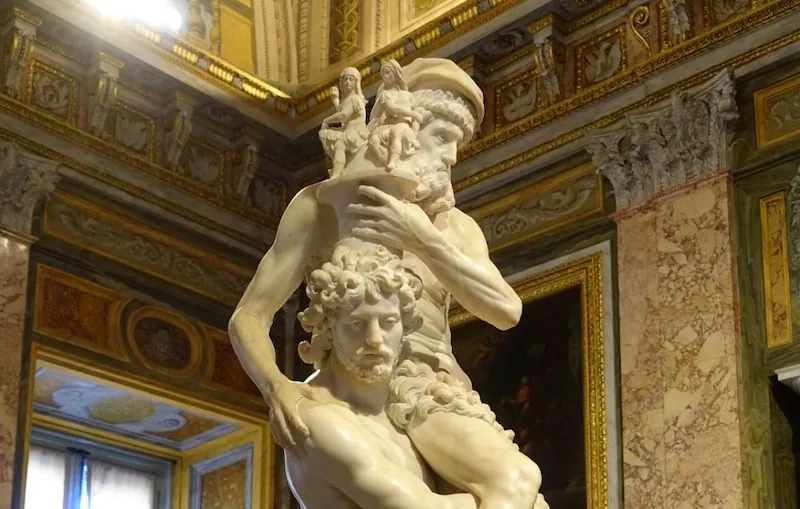
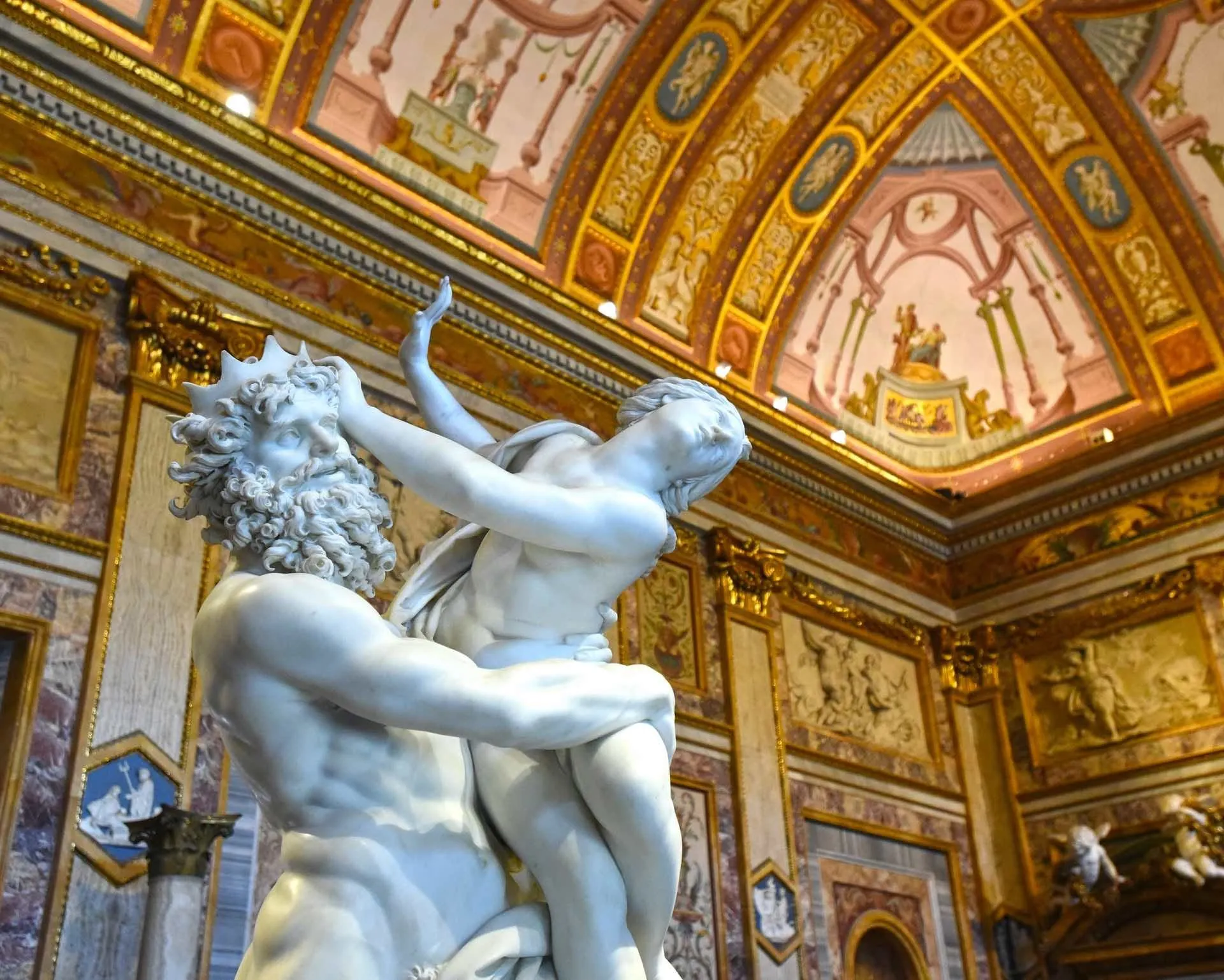
.webp)
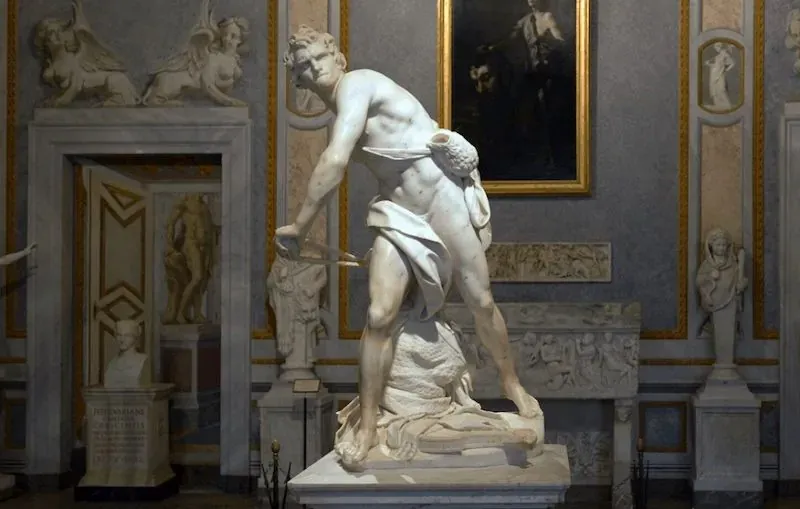
Bernini’s works in Borghese Gallery
At the age of 22, Bernini was awarded a papal knighthood by Pope Gregory XV. This was a well-deserved reward for his contribution to art, perhaps, particularly for his bust of the Pope himself. More practically, this knighthood provided a lifetime salary.
However, Pope Urban VIII Barberini, Gregory’s successor, would become an even more crucial patron and staunch ally. This relationship would result in palaces, fountains, and the largest bronze monument in the world.
In 1623, Bernini began work on the Baldacchino, the immense altar canopy towering above the papal altar. This would become the dominating focal point for the interior of St Peter’s Basilica.
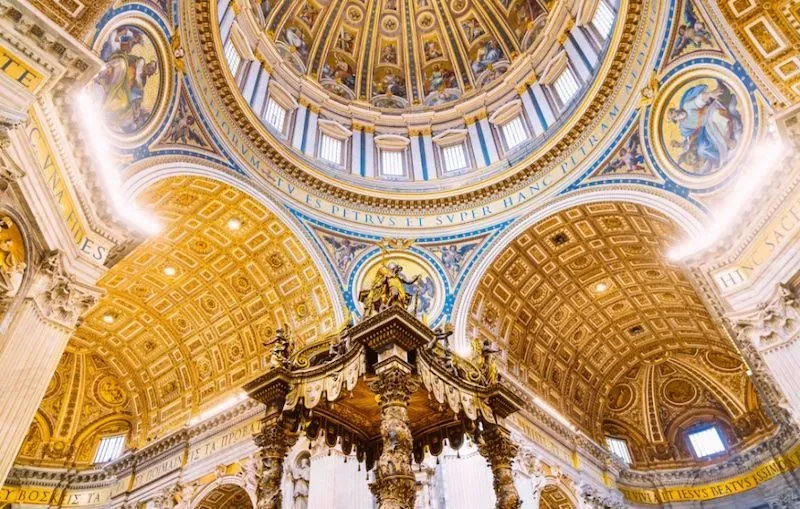
The top of Bernini’s Baldachino in St Peter’s Basilica
Was all the bronze recycled from the bronze of the Pantheon, stripping the ancient decoration that had remained in place for more than 1400 years? Perhaps. Or maybe that had been used to make cannons? Wherever the bronze came from, Bernini constructed this giant canopy right under Michelangelo’s Dome. It had to be this large, anything smaller would have been dwarfed under the vast space.
Again, the genius of Bernini was to not just make a canopy, but to make a story. Make it relevant! The four columns are twisted spirals, harking back to the twisted columns of the temple of Jerusalem that the Romans had destroyed in 70 AD. The family symbol of the Barberini family was the Bee. Bumble bee. Busy bee. What do you think we see all over the Baldacchino? Yes - bees of course. This was Papal advertising. This was me. I did this.
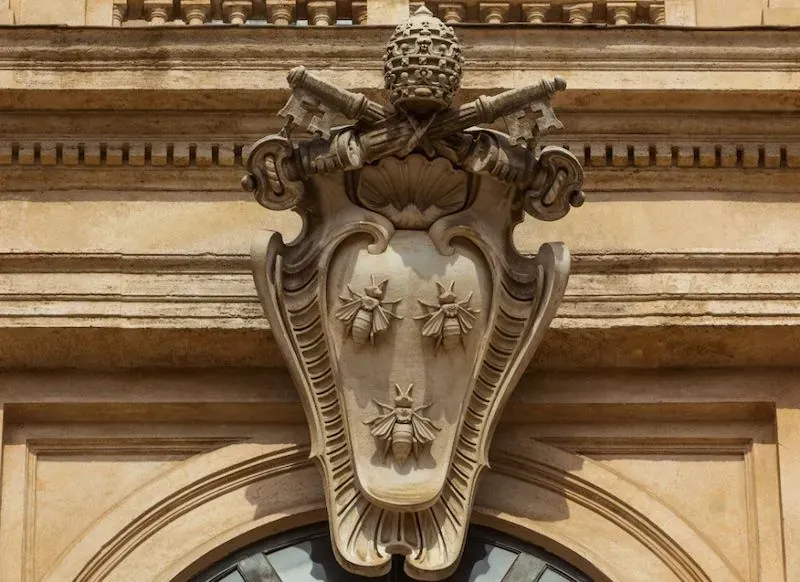
The Barberini Family's Coat of Arms
Bernini is still only 36 years old. He's the sculptor of the Pope and the darling of the people. Any craftsman worth his salt wants to join his workshop.
But not everything would run smoothly for Rome's golden boy.
Prodigious though he was an artist, Bernini’s love life left a lot to be desired. Around 1635 he was carrying on an affair with the wife of one of his assistants. Her name was Costanza Bonarelli and she was beautiful. How do we know? Because Bernini sculpted a portrait bust of Constanza, seductive and provocative with her top button undone.
What made this exceptional was that sculptors did not make portrait busts of ordinary women.
Saints? Yes. Queens? Yes.
Mistresses? Not in a million years.
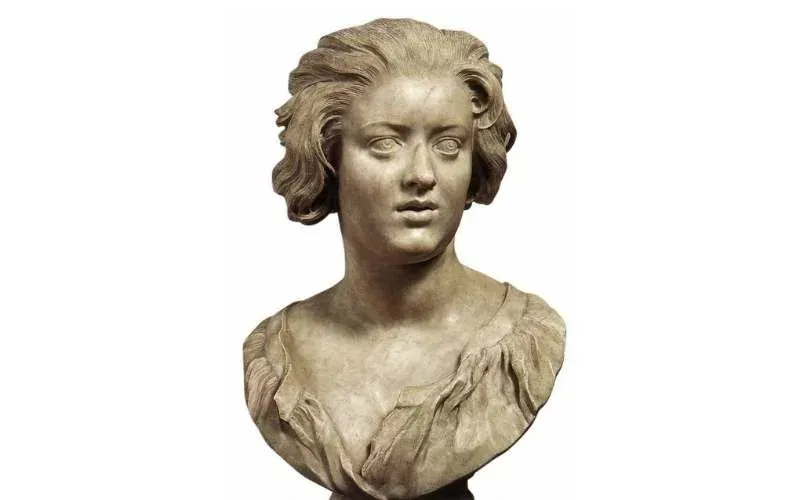
Costanza Bonarelli by Gian Lorenzo Bernini, now in Florence's Bargello Museum
The affair did not end well. Gian Lorenzo’s brother Luigi also embarked on an affair with the aforementioned Constanza, and when Bernini found out, he flew into a rage and tracked his brother down. He also sent a servant to savagely slash Constanza’s face with a razor. A cruel and brutal act from the famous lover of beauty.
A great scandal of the time, Constanza was imprisoned for adultery, Luigi was banished from Rome. Gian Lorenzo – well - being the favourite of the Pope had its advantages. He was merely given a fine and encouraged (read ordered!) by the Pope to marry. He married Caterina and they would go on to have 11 children.
Pope Urban had faith in Bernini, not only as a sculptor, but also as an architect. He commissioned the immensely prestigious task of adding two great campanelli, bell towers, to the recently completed facade of St Peter’s Basilica. Bernini undertook the task with his usual enthusiasm, vision and ambition. Perhaps too much ambition. As the first bell tower grew higher and higher, cracks began to appear on the facade of the church. Alarm increased as building continued ever upwards and the cracks started to spread.
Bernini blamed the existing foundations for the fractures, but this project was doomed to failure. In 1644 Pope Urban VIII died. Gone was Bernini’s ever-supportive patron and the newly elected Pope Innocent X immediately ordered the tower to be demolished. He made it plain that Bernini would no longer be the papal favourite.
Worse, Bernini's arch-rival and the Pope's new favourite, Francesco Borromini, would now receive the plum jobs. Bernini’s reputation was in tatters and he needed to look outside the papal court for new commissions.
The church of St Maria della Vittoria nestles on a corner not so far from todays Termini train station. In 1647 the wealthy Cornaro family decided to commission Bernini for the decoration of their private chapel. A new chance to prove himself. Did he play safe? Quite the opposite. The Ecstasy of St Theresa in the Cornaro chapel has been the subject of admiration, condemnation and endless debate by art historians, critics and students for almost 400 years.
It was a novel topic. Not just another ‘Madonna and child’ or another ‘John the Baptist’. St Teresa of Avila had only recently been sanctified. Her account recalls how she was pierced by the golden spear of an angel which caused such exquisite pain that she experienced a spiritual ecstasy revealing the love of God.
Bernini takes this account and produces pure theatre. The centrepiece of St Teresa and the angel he carved from pure white marble. His characteristic ability to transform solid stone to flowing fabric was in full force. However, it was the treatment of St Teresa herself that was so innovative.
Reclining on a cloud, almost levitating, her head is thrown back, her eyelids are half closed and her lips parted at the very moment of the ecstasy. Is this spiritual ecstasy? Or, as many have suggested, a representation of a much more physical experience?
The scene is illuminated by light from a concealed window in the dome of the chapel, amplified by gilded stucco rays pouring forth.
Maybe the most unusual touch here was Bernini’s addition of two loggias, literally theatre boxes. Lifesize members of the Cornaro family are portrayed observing the drama being played out below them. This really is Bernini playing to the gallery. Another triumph, if controversial. The boy was back!
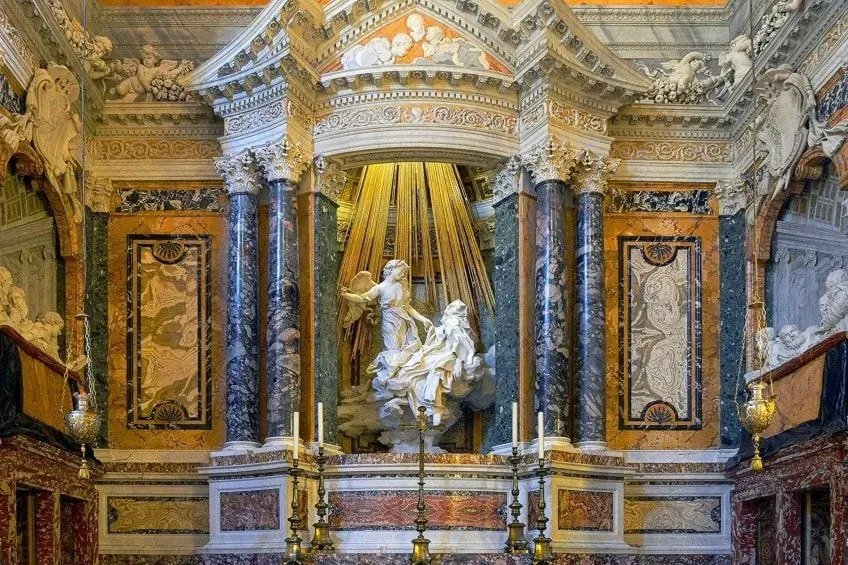
The Ecstasy of Saint Teresa by Gian Lorenzo Bernini
The year 1655 would bring the election of a new Pope and the return of Bernini’s privileged position at the papal court. Pope Alexander VII Chigi welcomed Bernini back with open arms and commissioned several works to adorn St Peter’s Basilica, St Peter’s Square, and his own funerary monument.
This is an astonishing monument. Situated towards the end of the left aisle, this was always going to be a challenging project. The setting is an alcove above a working door. How to work around that problem? Beneath the benign figure of the Pope, Bernini decided to sculpt one solid piece of purple jasper to create an elaborate curtain being raised to reveal the door, an allegory to the portal to the afterlife.
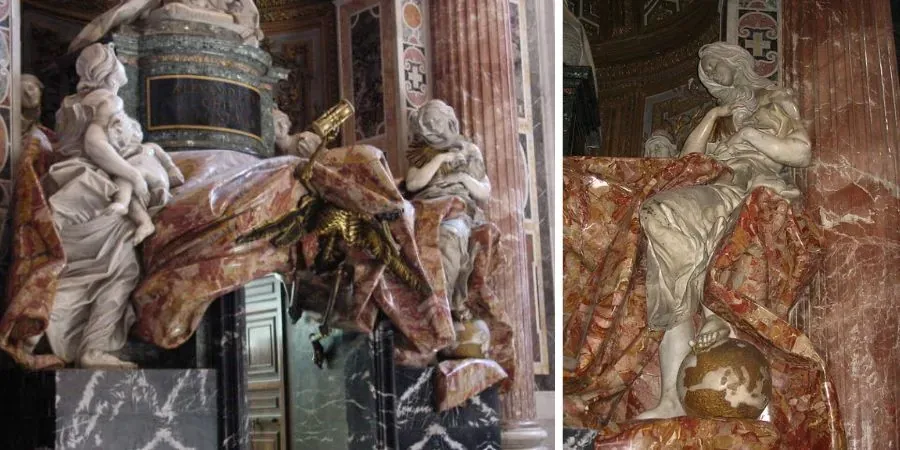
Funerary monument of Pope Alexander VII by Gian Lorenzo Bernini in St. Peter's Basilica
What is raising the curtain? A skeleton, holding aloft an hourglass. The message is clear: time is running out and death is coming for all of us. Bernini was 73 years old.
The masterstroke of this composition is the statue representing Truth that flanks the curtain. Many papal funeral monuments are surrounded by female statues - the personifications of virtue. Charity, Justice, Prudence and Truth. Bernini’s statue of Truth is seen resting her foot on a globe. There is a spike through her foot. Which country is she standing on? Yes, England — the great European power whose king had rejected Catholicism in favour of Protestantism.
England – you are a thorn in the foot of truth and a thorn in the side of the Pope.
This funerary monument combines skill, ingenuity, and social comment thrown in for good measure. Completed in 1678, this is often considered to be Bernini’s last great work, just two years before his death.
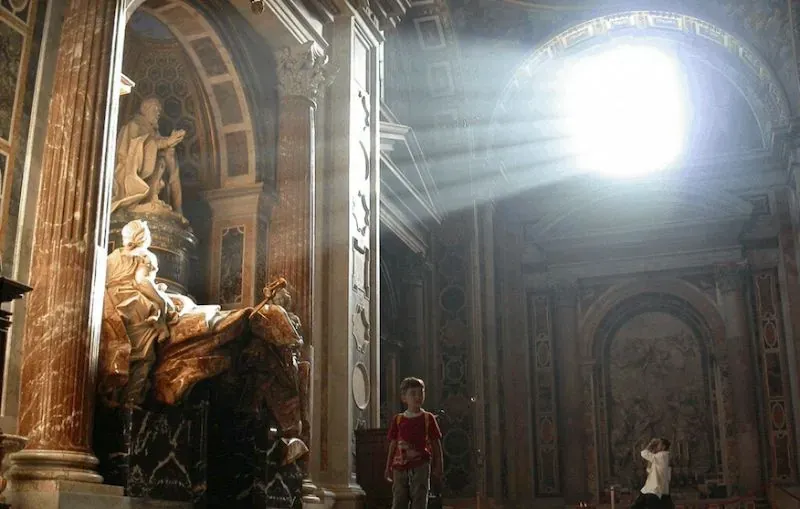
The Tomb of Pope Alexander VII in St Peter's Basilica
In 1680, just shy of his 82nd birthday, Bernini died of a stroke.
He had been the virtual artistic director throughout the 1600s in Rome, leaving an indelible footprint on the capital of Catholicism. From churches to museums, from piazzas to bridges, Bernini enriched the Eternal City city with a style and energy rarely seen.
All those fortunate enough to call Rome home will be forever in his debt.

No headings found in content.
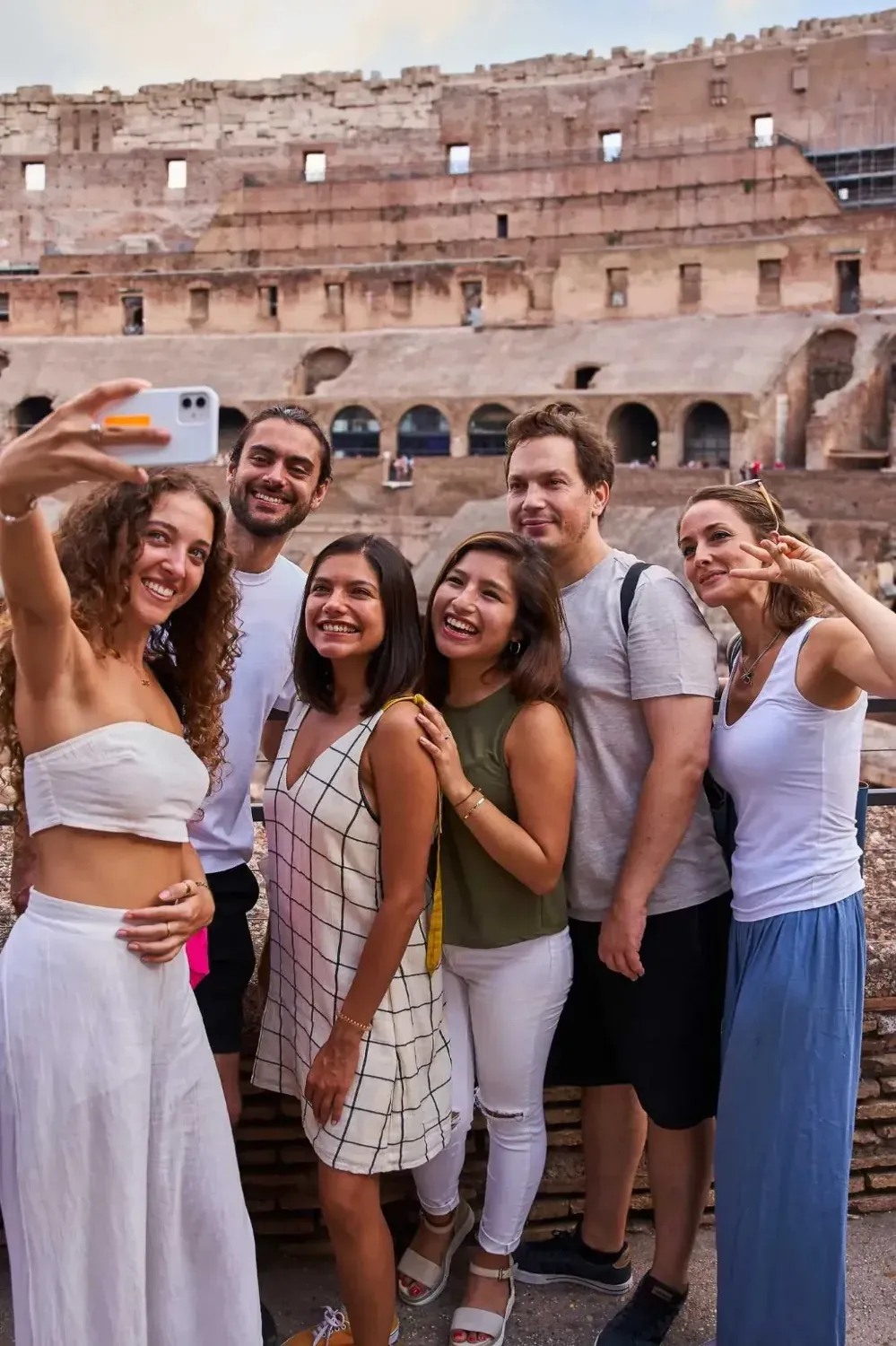
Go back in time on a once-in-a-lifetime, semi-private exploration of Ancient Rome’s most legendary landmarks—the Colosseum, Palatine Hill, and Roman Forum.
Designed for comfort and connection, this semi-private tour is limited to just 6 guests, giving you more one-on-one time with your expert guide, a relaxed pace, and the opportunity to dive deeper into the stories that fascinate you most.
With priority, fast-track access, you’ll also glide past the crowds and straight into the heart of the Eternal City. Save time, avoid the stress, and make the most of every moment with the people who matter most to you.
Your 3-hour journey begins inside the iconic Colosseum. We’ll take in the breathtaking views from above the arena that most visitors miss. Here, you’ll stand where gladiators once battled and hear captivating tales of emperors, epic contests, and ancient innovation. With fewer people in your group, your guide can personalise the experience, answering your most burning questions and focusing on what interests your group.
Next, we’ll ascend the legendary Palatine Hill, the mythical birthplace of Rome and site of the Empire’s most extravagant palaces. Then, descend into the Roman Forum, once the bustling centre of Roman public life. As you walk through the ruins of temples, arches, and political buildings, your guide will bring the ancient world to life.
This isn’t just a tour, it’s a meaningful journey into history, crafted for curious travellers seeking a deeper, more intimate Roman experience.
Prepare for a unique, unforgettable journey through Rome’s most famous landmarks with a small, friendly group that lets you explore at your own pace.
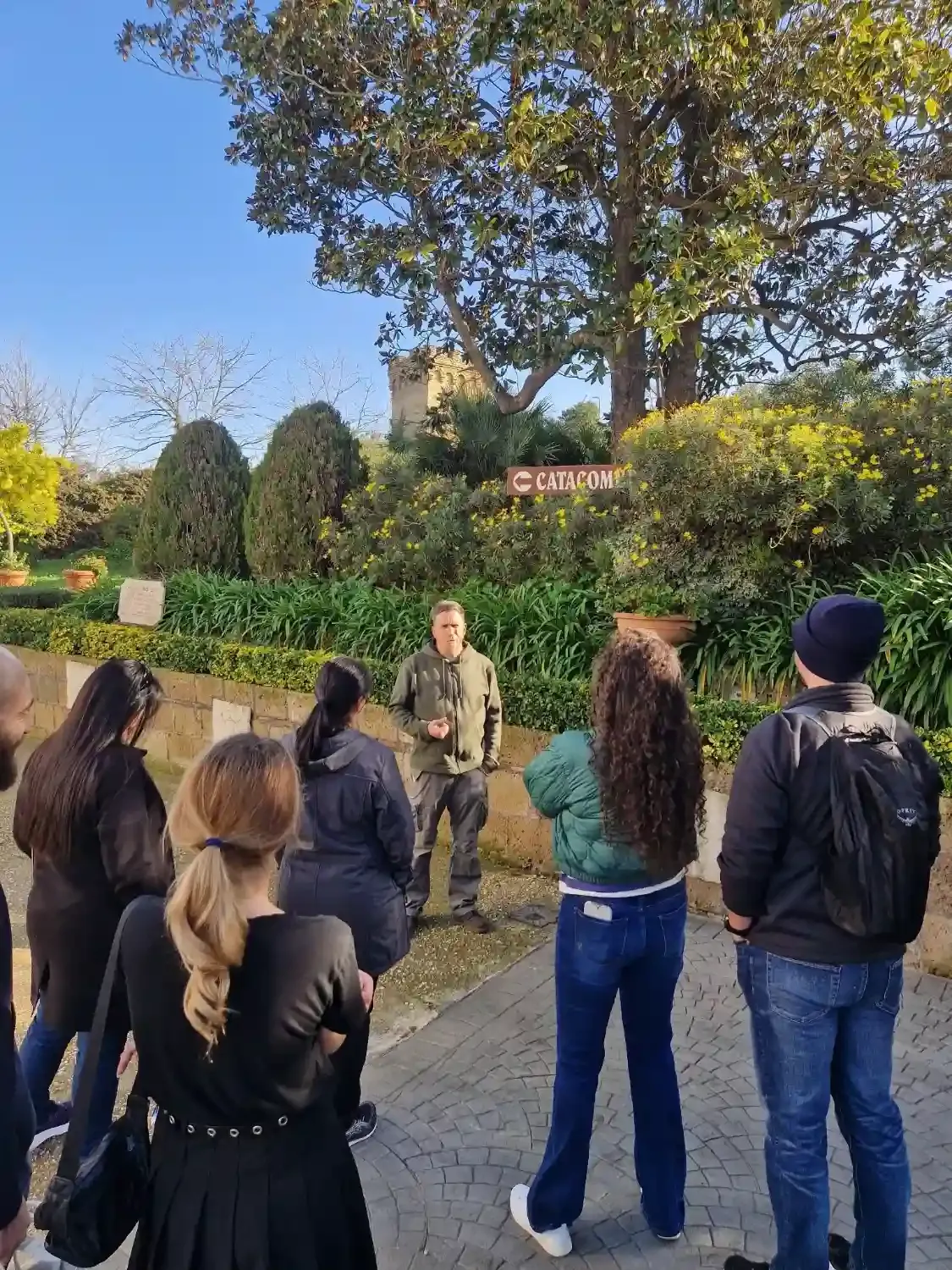
The best way to understand Rome is to take a look beneath it. Our Rome Catacombs Tour is perfect for travellers who want to get off the beaten track, unearth underground passageways, and discover the secrets of the largest catacombs in Rome.
Prepare to discover the deeper, darker, and more mysterious parts of Roman history with a small group of like-minded adventurers. By digging downwards into the ancient labyrinth of tunnels, we’ll uncover all the secrets and dark tales of the catacombs of Domitilla.
Your friendly expert guide will meet you outside and give you a quick overview of the tour before we make our descent. With our close guidance, you’ll have the chance to explore and discover ancient passageways in the largest, most famous catacombs in Rome. These tunnels are sacred and an integral part of the Christian and Roman faiths. Learn how ancient Christian rites and rituals were held underneath the bustling city streets.
These tunnels were not only a place of ritual, but are still a sacred place of rest for more than 150,000 bodies. These catacombs and the bodies they hold stretch for almost 20 km underground, some of which is yet to be seen by the public eye.
With a maximum of ten travellers per tour group, you’ll have the opportunity to ask plenty of questions. The price of the tour includes the tickets. If you’d like to join us on our Rome Catacombs Tour of the darkest, largest catacombs in Rome, book your spot now to make sure you don’t miss out!

Tired of big-group tours that move from one attraction to the other before you’ve even had the chance to understand what your seeing?
This is the Vatican Tour for you.
Our VIP Vatican tour offers a more personal, intimate experience that doesn’t compromise on anything. See it all, learn it all, and feel it all.
With a maximum group size of 12, you can guarantee you’ll have more than enough time and privacy to soak up the stunning artworks and fascinating history of the Vatican City.
Our tour starts at the Vatican Museums, where more than four millennia’s rich history resides. Worried about getting lost in the labyrinth of corridors and galleries? Don’t be. Gain real-world insight into the stunning wonders of the museum’s 1000+ rooms thanks to the help of your friendly, expert guide. They’ll be excited to answer as many questions that you could possibly come up with, so feel free to ask away.
Afterwards, we’ll head over to the Pope’s private place of prayer, the Sistine Chapel. Home to two of Michelangelo’s masterpieces, The Last Judgement and its famous ceiling, the Sistine Chapel is just as awe-inspiring today as when it was unveiled in the 1500s. Marvel at world famous frescoes and discover how Popes are elected, here in this very room.
Our VIP Vatican tour runs at a comfortable, leisurely pace and includes all ticket prices for the different sites and areas we’ll be visiting. Remember, our VIP tours only accommodate a maximum of 12 people at a time, which means that spots fill up fast.
Book your VIP Vatican Tour now to avoid disappointment!
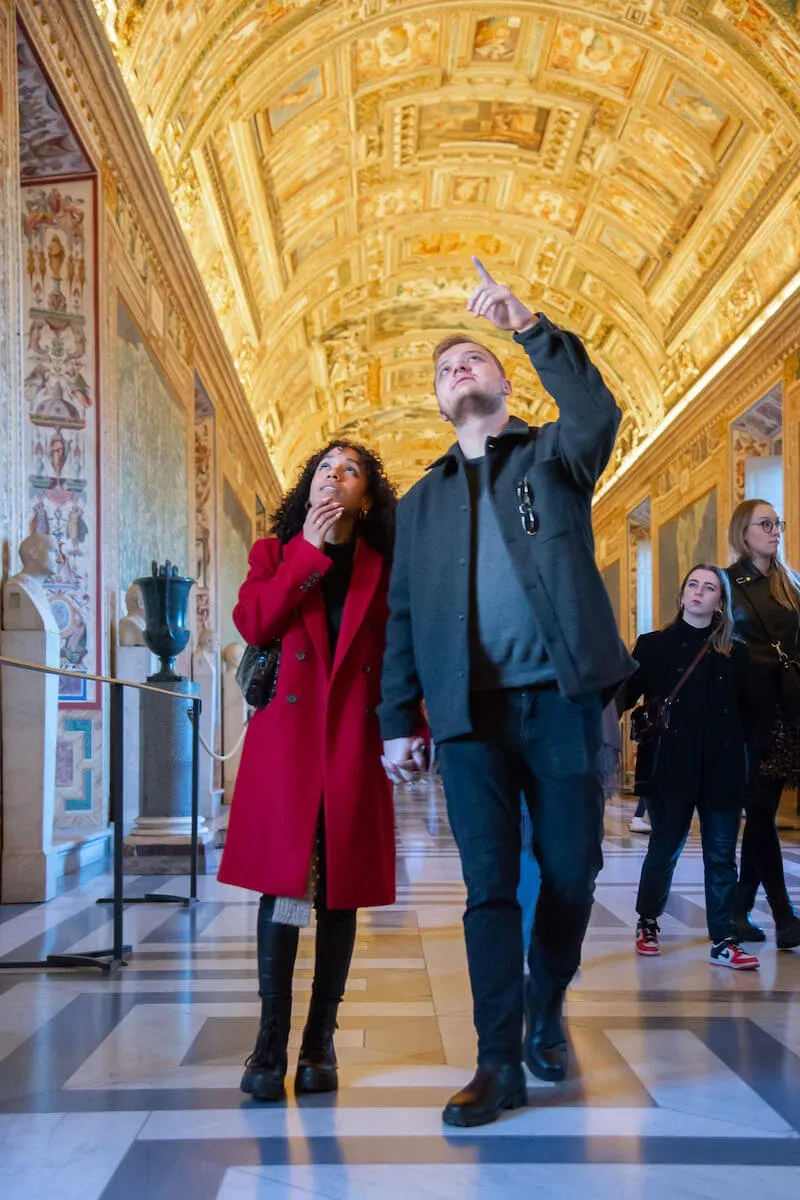
People made a pilgrimage from all over the world to visit the spiritual home of Catholicism. Unfortunately, this means that getting into the Vatican is by no means easy. With our priority entrance, you’ll be able to skip the hours of waiting in line and walk right into one of the most historically rich places in the world.
Your private tour starts with the Vatican Museums. Don’t be overwhelmed by the never-ending rooms or twisting corridors – we’ll guide you through some of the thousands of rooms without missing their deepest secrets. Our route includes the Hall of Maps, the Gallery of Tapestries, the Gallery of Candelabra, The Raphael Rooms and much more. Your friendly expert guide will be happy to answer any questions you might have.
After our trip through the museums, you’ll make your way into the Sistine Chapel, one of the most fabled historical sites in the world. The Sistine Chapel houses the timeless masterpiece crafted by none other than Michelangelo himself. Marvel at the Last Judgement in all its glory.
The pace of this private tour is comfortable and can be adapted to suit you. It also includes all ticket prices for the areas that we’ll be visiting during our trip. Book your spot now to make sure you don’t miss out on the chance to visit one of the most sacred spaces on Earth!
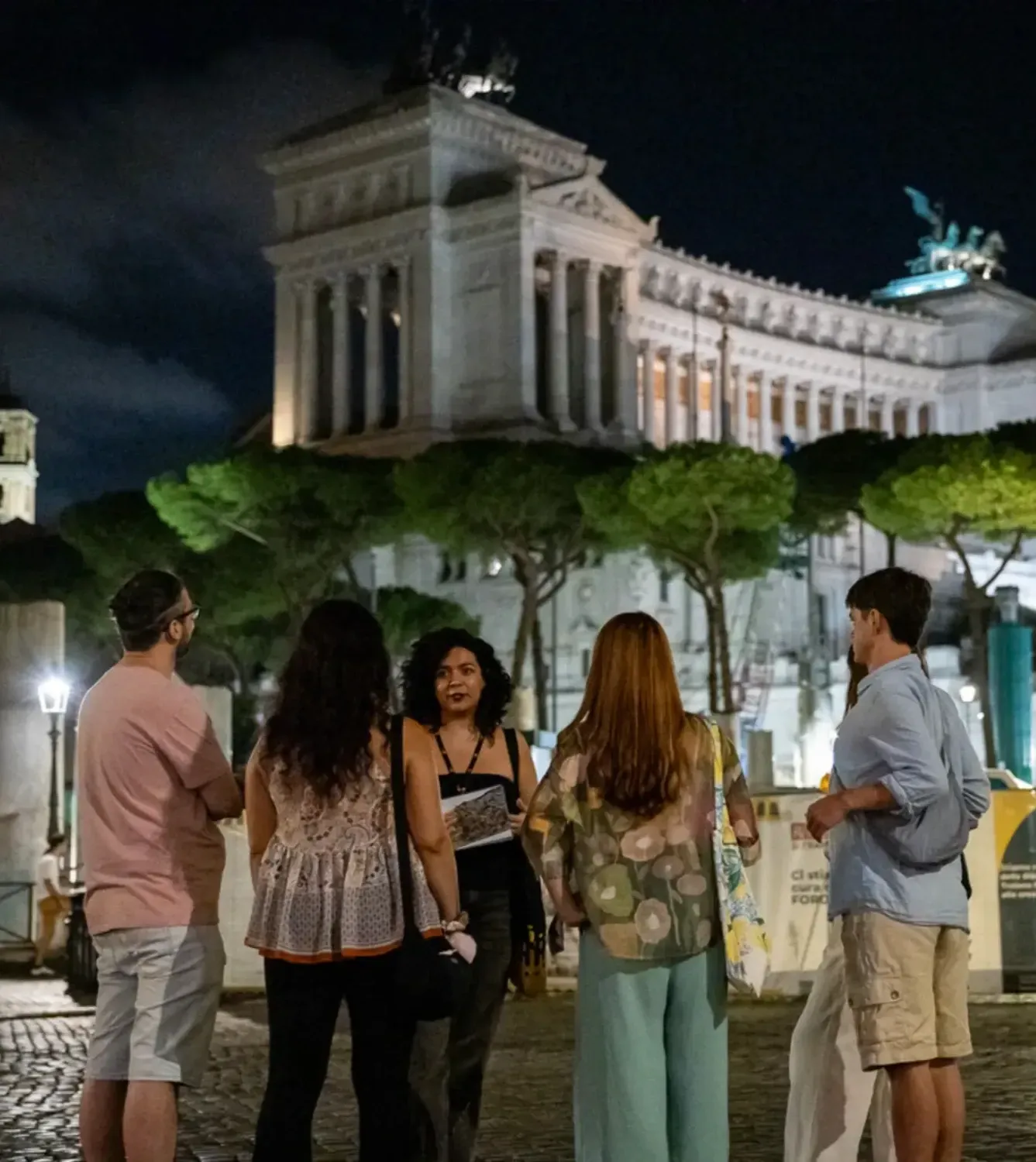
Join us on a journey through Roman history on our immersive Rome by Night Walking Tour. Your expert guide will share the city’s secrets, history, and fascinating tales—from antiquity through to the modern day, and at a pace to suit you.
Our tour starts in Rome’s most picturesque square, Piazza Navona, where the ancient Romans used to watch athletic contests (agones). Today’s piazza sits above the ancient stadium and boasts Gian Lorenzo Bernini‘s stunning Fountain of the Four Rivers as its centrepiece.
A five-minute walk from Piazza Navona takes us to the world-famous Pantheon. Constructed more than two-thousand years ago by the eccentric emperor Hadrian, the Pantheon was consecrated as a monument to all the pagan gods (pan theos, in Greek meaning all the gods). This second-century temple is one of the best-preserved monuments in the Roman Empire and its unreinforced concrete dome still perplexes architects.
Our next stop is the iconic Trevi Fountain. Immortalised by Anita Ekberg wading through its water in Federico Fellini’s iconic film La Dolce Vita, the Trevi Fountain one of the most romantic spots in the Eternal City. Snap your photos of the monument in the moonlight, listen to your guide decipher its symbols, and toss a coin over your shoulder to guarantee your return to Rome.
We emerge from Rome’s winding backstreets onto Piazza Venezia. Stretching from the foot of the Capitoline Hill, against the backdrop of the Altar of the Fatherland, Piazza Venezia is Rome’s most recognisable square, and a repository of history involving figures from Napoleon to Mussolini.
Your guide will lead you down the Via dei Fori Imperiali, the boulevard that cuts through ancient Rome, past Trajan’s Column and alongside the forums of Trajan, Augustus and Nerva. Your guide will feed your curiosity and nourish you with knowledge about ancient Rome and its empire as you make your way towards the most famous monument of all: the Colosseum.
The Colosseum is one of the most awe-inspiring attractions that has survived from antiquity. As a colossal feat of architecture and engineering, its form has been replicated throughout the ages, manifested in stadiums and sports venues around the world. But while its form is familiar to us, the spectacles it accommodated are entirely alien, and remind us of the violent nature of Roman culture.
Group sizes are 15 people maximum.
Book your spot now to avoid missing out!
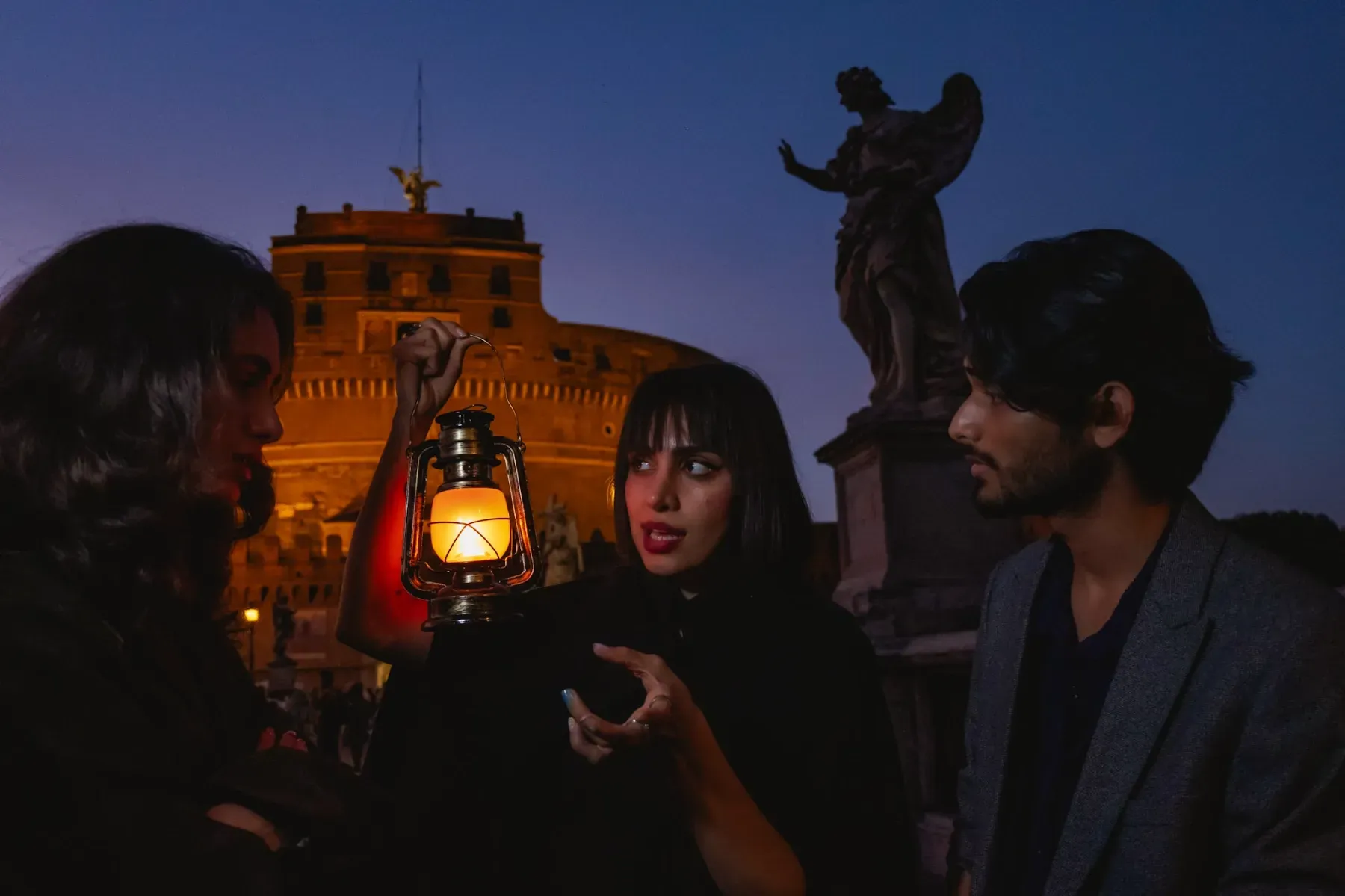
Rome may well be the world’s most beautiful city, but after dark a more sinister side emerges. The ghosts of popes, emperors, and artists lurk on every corner, their lives claimed by tragedy and conspiracy across more than 2,000 years of history. Our Rome Ghost Tour is not for the faint hearted — you’ll hear the ghastly tales of beheadings and murder that are sure to keep you up late at night.
Your Rome Ghost Tour starts at Campo de’ Fiori, a central square, where you’ll be treated to the tale of Giordano Bruno, one of Rome’s greatest minds who got on the wrong side of the church. After learning about his grisly end, you’ll begin to explore the city. Venture through medieval backstreets; visit an ancient church adorned with skulls; and step inside the home to a mysterious order of monks. Discover the childhood home of one of Rome’s most infamous executioners; see the site of one of Rome’s most infamous prisons; and pass by a poisonous perfumery where cosmetics killed.
Your tour ends at the imposing Castel Sant’Angelo, where your guide will reveal the horror of Rome’s most disturbing executions. If you’re (un)lucky, you might even encounter a ghost or two.
No matter what, you’ll never see Rome the same way again.
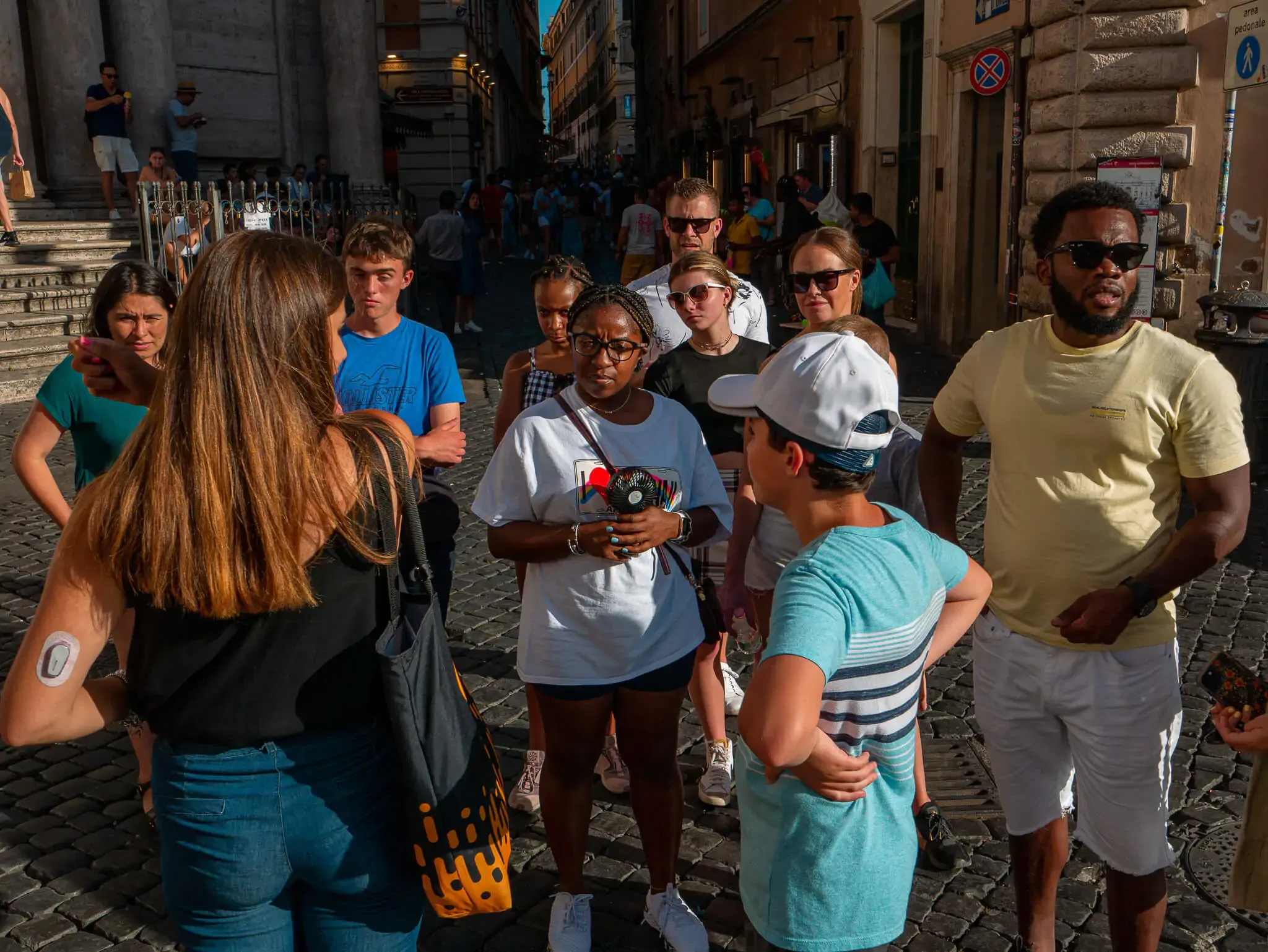
Explore the wonders of the Eternal City on our best of Rome walking tour. As you get your bearings around Rome’s cobbled historic centre, your expert storyteller will bring Rome’s most must-see sites to life, including the Pantheon, Trevi Fountain, and Piazza Navona. Take photos, make memories, and most importantly, get the most out of your time in the Italian capital!
Your private guide will share the city’s secrets and narrate its story in a way that will make you feel like you’ve stepped back in time – from explaining how the stunningly intricate churches and palaces were erected, to how the grand fountains were used to channel water throughout the city.
We will start at Trajan’s Column, which portrays the bloody victory of the emperor during the Dacian wars in Eastern Europe. We’ll then head to the Piazza Venezia, the crossroads between the ancient city and the modern capital and one of the most scenic squares in Italy!
After taking a moment to marvel at the imposing Altar of the Fatherland, we’ll make our way to the iconic Trevi Fountain. Toss a coin into the fountain, spend a moment soaking in its sounds and scenery (metaphorically, not literally!), and uncover the fascinating stories behind the fountain’s statues and symbols.
After discovering the incredible frescoes within the church of Sant Ignazio, we’ll make our way to the Pantheon where the spectacle of the 2000-year-old dome will blow you away. Marvel at one of the best-preserved buildings of the ancient world, hear the story behind the man who built it, and discover the shocking architectural secret behind how the dome is (or isn’t) supported!
Your private walking tour of Rome finishes at Piazza Navona. The square is situated near some of Rome’s best and most vibrant bars and restaurants and your guide will be happy to recommend where to go.
This tour is suitable for people of all ages and fitness levels. You can expect this memorable experience to last about two hours, which leaves you with more than enough time to explore the city beyond.
